TNPSC Books
-
TNPSC பொதுத் தமிழ் Book - for Group 2, 2A, 3, 4 & VAO
₹1,000.00Original price was: ₹1,000.00.₹850.00Current price is: ₹850.00. -
TNPSC General English Book - for Group 2 & 2A
₹1,000.00Original price was: ₹1,000.00.₹850.00Current price is: ₹850.00.
Group 1 Courses
Group 1 | Postal and Online Test Series | 2022
₹3,200.00Original price was: ₹3,200.00.₹2,800.00Current price is: ₹2,800.00. 88TNPSC Group 1 - Test Series - 2019
4.7₹3,500.00Original price was: ₹3,500.00.₹2,800.00Current price is: ₹2,800.00. 541
Group 2 & 2A Courses
TNPSC Group 2 and 2A - Test Series - 2019 - தமிழ்
₹2,400.00Original price was: ₹2,400.00.₹1,800.00Current price is: ₹1,800.00. 175TNPSC Group 2 and 2A - Test Series - 2019
₹2,400.00Original price was: ₹2,400.00.₹1,800.00Current price is: ₹1,800.00. 527
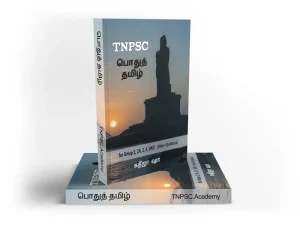
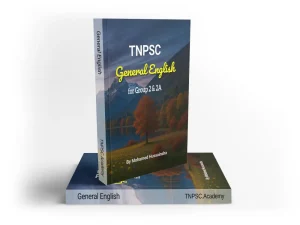





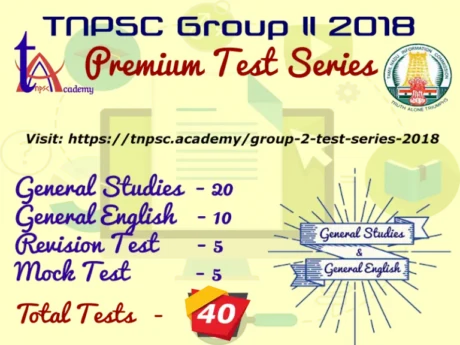
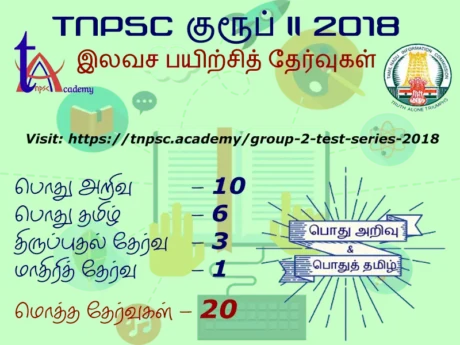


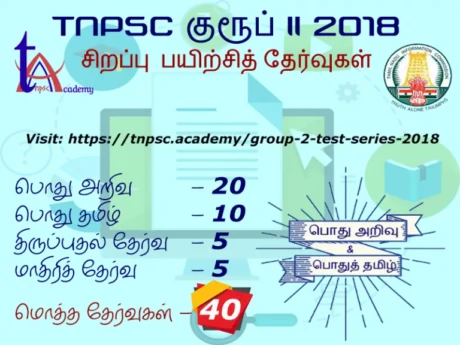


www.tnpsc.academy – TNPSC Current Affairs February 08, 2021 (08/02/2021)
Topic: Profile of States, Latest Diary of Events
Uttarakhand Flash Flood
Recently, a glacial break in the Tapovan-Reni area of Chamoli District of Uttarakhand led to massive Flash Flood in Dhauli Ganga and Alaknanda Rivers, damaging houses and the nearby Rishiganga power project.
In June 2013, flash floods in Uttarakhand wiped out settlements and took lives.
Cause of Flash Flood in Uttarakhand:
It occurred in river Rishi Ganga due to the falling of a portion of Nanda Devi glacier in the river which exponentially increased the volume of water. Rishiganga meets Dhauli Ganga near Raini. So Dhauli Ganga also got flooded.
Major Power Projects Affected:
Rishi Ganga Power Project: It is a privately owned 130MW project.
Tapovan Vishnugad Hydropower Project on the Dhauliganga: It was a 520 MW run-of-river hydroelectric project being constructed on Dhauliganga River.
Several other projects on the Alaknanda and Bhagirathi river basins in northwestern Uttarakhand have also been impacted by the flood.
Flash Floods:
These are sudden surges in water levels generally during or following an intense spell of rain.
These are highly localised events of short duration with a very high peak and usually have less than six hours between the occurrence of the rainfall and peak flood.
The flood situation worsens in the presence of choked drainage lines or encroachments obstructing the natural flow of water.
Causes:
It may be caused by heavy rain associated with a severe thunderstorm, hurricane, tropical storm, or meltwater from ice or snow flowing over ice sheets or snowfields. Flash Floods can also occur due to Dam or Levee Breaks, and/or Mudslides (Debris Flow).
In areas on or near volcanoes, flash floods have also occurred after eruptions, when glaciers have been melted by the intense heat.
The intensity of the rainfall, the location and distribution of the rainfall, the land use and topography, vegetation types and growth/density, soil type, and soil water- content all determine just how quickly the Flash Flooding may occur, and influence where it may occur.
_
Topic: Profile of States
Ladakh to get India’s first Geothermal Power Project
The first geothermal power project of India will be established at Puga village of eastern Ladakh.
Key facts:
This decision was taken because, Puga village was identified as the hotspot of geothermal energy by the scientists. The project will be completed in four phases.
A tripartite Memorandum of Understanding (MoU) to establish and implement the first phase was signed on 6th February, 2021 between ONGC Energy; LAHDC, Leh and the Power Department of UT Ladakh. This geothermal project is known as Geothermal Field Development Project. It will be commission by the end of 2022.
_
Topic: New inventions on Science and Technology
Clean Fuel Hydrogen
Recently, researchers at the Indian Institute of Technology, Delhi (IIT-D) have come up with a way to generate clean fuel hydrogen from water at a low-cost. It is a significant step towards efforts across the globe that are being made to look for cleaner and greener energy sources.
Hydrogen gas is a viable choice as a renewable substitute for fossil fuels, and can help mitigate emissions to reduce pollution.
Key facts:
The researchers at IIT-D have successfully split water by a process known as Sulphur-Iodine (SI) thermochemical hydrogen cycle (SI Cycle) to generate low-cost, clean hydrogen fuel for industrial consumption.
Generally, in SI Cycle, the separation of Hydrogen from oxygen requires a high amount of heat (generally from non-renewable sources such as coal, oil and natural gas). This makes the large-scale production of hydrogen gas economically non viable and non environment friendly.
The main achievement has been designing a suitable catalyst for the energy intensive, corrosive step of sulphuric acid conversion to sulphur-dioxide and oxygen.
Significance of the Discovery:
Enhancing Hydrogen Fuel Cell Technology:
Enabling availability of low cost hydrogen through this discovery will enhance and improve the application of Hydrogen fuel cell technology which offers the advantages of a clean and reliable alternative energy source to applications such as – electric vehicles, primary and backup power for a variety of commercial, industrial, and residential buildings; and more futuristic-sounding applications like air taxis.
A hydrogen fuel cell is an electrochemical power generator that combines hydrogen and oxygen to produce electricity, with water and heat as by-products.
Help Adhering Emission Targets:
It could help India to adhere to its commitment in the Paris Climate Agreement and its Intended Nationally Determined Contribution (INDC) Targets and ensure that its mobility in the future is with zero emissions.
Complements FAME India Scheme:
It will complement the implementation of the FAME India Scheme launched with the objective to support hybrid/electric vehicles market development and manufacturing ecosystem.
_
Topic: Profile of States
Assam’s Jerenga Pothar and Dhekiajuli Town
The Prime Minister visited two significant historical places in Assam. The first was Sivasagar’s Jerenga Pothar, where 17th-century Ahom Princess Joymoti sacrificed her life. Second was Dhekiajuli town, associated with the Quit India Movement of 1942.
Jerenga Pothar:
Jerenga Pothar, an open field in Sivasagar town, is popularly connected to the valour of 17th century Ahom princess Joymoti. Formerly known as Rangpur, Sivasagar was the seat of the powerful Ahom dynasty, who ruled Assam for six centuries (1228-1826).
Chaolumg Sukapha founded the Ahom kingdom. From 1671 to 1681, the Ahom kingdom was undergoing a period of turmoil, it was at this time that Prince Godapani (Joymoti’s husband) escaped to the Naga Hills before enemies could capture him.
But his enemies captured his wife Joymoti, hoping she would tell them about his whereabouts, however, despite being tortured for days, tied to a thorny plant, in an open field, Joymoti refused to divulge any information.
She died, sacrificing her life for her husband, who ultimately became the king, ushering in an era of stability and peace in Assam. The place Joymoti was tortured to death was Jerenga Pothar.
Significance of the Place:
While the Jerenga Pothar itself is not a protected archaeological site, its vicinity includes a number of protected sites, including the Na Pukhuri tank to its east and the Pohu Garh, a natural zoo built during the Ahom era, to its west.
Close by is the large Joysagar tank, built by Ahom king Swargadeo Rudra Singha in 1697, and the Vishnu Dol temple.
In 2017, the field was used for the centenary celebrations of the apex and influential literary body, the Asam Sahitya Sabha.
Dhekiajuli Town:
Dhekiajuli was home to possibly the youngest martyr of the Indian freedom struggle. On 20th September, 1942, as part of the Quit India Movement, processions of freedom fighters marched to various police stations across several towns in Assam.
These squads, which were known as ‘Mrityu Bahini’, or death squads, had wide participation – including women and children – and set out to unfurl the tricolour atop police stations, seen as symbols of colonial power.
The British administration came down heavily on them. In Dhekiajuli, at least 15 people were shot dead, three of them women, including the 12-year-old Tileswari Barua. Tileswari is considered as one of the youngest martyrs of India’s freedom struggle. 20th September has for long been observed as Martyrs’ Day in Dhekiajuli town.
_
Topic: International News
Hope: UAE’s first mission to Mars
HOPE Mission– the first Arab interplanetary mission is expected to reach Mars’ orbit on feb 09 in what is considered the most critical part of the journey to unravel the secrets of weather on the Red Planet.
About the Hope mission:
The Hope mission is a Mars orbiter spacecraft, which will study the thin atmosphere of Mars. The mission is officially named the Emirates Mars Mission (EMM) and the orbiter has been named Hope or ‘Al Amal’. It is the first interplanetary mission for the Arab World.
The Hope orbiter:
The Hope probe has a mission life of one Martian year, which is almost two Earth years. The three main objectives of the Hope probe are:
to understand the climate dynamics and global weather map of Mars by studying the lower atmosphere of Mars.
to explain how the weather of Mars affects the escape of hydrogen and oxygen, by correlating conditions in the lower and upper atmosphere.
to understand the presence and variability of hydrogen and oxygen in the upper atmosphere, and why Mars is losing these gases to space.
Significance of the mission:
It is a known fact that the Red Planet was once habitable, from signatures of flowing water and organic material that point to a past that could have supported living things.
An understanding of Mars’ past could help scientists understand the future of Earth.
_
Topic: Profile of States
Uttar Pradesh: 16-Digit Unicode To Identify Landholdings
The Uttar Pradesh government has introduced a system of issuing a unique 16-digit Unicode on February 7, 2020. This Unicode will be used to mark all kinds of landholdings in the state.
Unicode numbers:
The Unicode numbers for the land would comprise of the16 digits. The first six digits is based on the population of the land. Next 4 digits in the line would determine the unique identity of the land. Digits from 11 to 14 would be the number of divisions of the land. Lastly, 2 digits would contain the details regarding the category. With the help of the last 2 digits, the category of the land viz. residential, agricultural and commercial land can be identified.
_
Topic: India and its Neighboring Countries, Latest Diary of Events
Geographical Indication (GI) tag for its Basmati
Recently, Pakistan received the Geographical Indication (GI) tag for its Basmati rice under its Geographical Indications Act 2020. Pakistan is fighting a case in the European Union (EU) against India’s move to get Basmati Rice as its product.
_
Topic: Profile of States
Smart and next generation bikes
Smart bikes and next generation bikes were launched by chief minister Edappadi K Palaniswami at the Marina beach. It is the part of a Greater Chennai Corporation initiative. The battery-powered bikes can run for 45km once fully charged. It can also be pedalled.